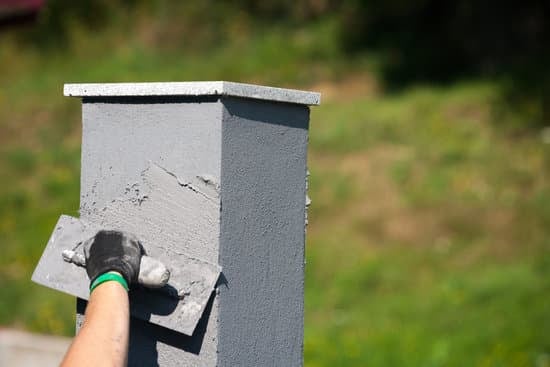Home improvement projects can be exciting but also expensive endeavors. Whether you’re looking to renovate, remodel, or simply update your living space, saving money is an essential part of the process. In fact, it is recommended that homeowners save a certain amount per year to cover the costs of home improvement projects and upgrades.
Why is home improvement important? Well, for starters, it allows you to enhance the functionality and aesthetics of your home. Whether you’re adding value for future resale or making your living space more enjoyable for yourself and your family, home improvement projects can transform your house into a place of comfort and pride.
However, accomplishing these improvements requires careful financial planning. Budgeting and saving are vital components when considering any type of project. Determining how much to save per year for home improvement can seem challenging at first, as costs can vary greatly depending on the size and complexity of the projects you have in mind.
By setting aside a specific amount each year dedicated to home improvements, you can effectively work towards achieving your goals without putting unnecessary strain on your finances. In this article, we will explore why setting a budget is important when it comes to home improvement projects and provide tips on how to determine an appropriate amount to save.
Plus, we will discuss strategies for creating a realistic savings plan tailored to your needs and examine tools that can help you track your progress along the way.
So whether you’re dreaming of a kitchen renovation or envisioning a backyard oasis, get ready to learn how saving money each year can make those dreams a reality. By taking proactive steps towards preparing financially for your home improvement ambitions, you’ll be well on your way to transforming your current space into something spectacular while maintaining financial stability.
The Importance of Setting a Home Improvement Budget
Setting a budget for your home improvement projects is essential in determining how much you should save each year. Without a budget, it can be difficult to keep track of your expenses and ensure that you are putting aside enough money for your projects. Here are some important steps to consider when setting a home improvement budget:
- Assessing your needs: Before setting a budget, it is important to assess your home improvement needs. Take the time to evaluate which areas of your home require improvement and prioritize them based on urgency and importance. This will help you allocate the necessary funds for each project.
- Estimating costs: Once you have identified the projects that need attention, it is important to estimate the costs associated with each one. Research the average costs of similar projects or consult with contractors to get accurate estimates. This will give you a clear understanding of how much money you need to save for each project.
- Consider long-term maintenance: In addition to the initial cost of the project, it is also important to consider any long-term maintenance expenses that may arise as a result of the home improvement project. For example, if you plan on installing new landscaping, consider ongoing maintenance costs such as watering, fertilizing, and replacing plants if necessary.
Once you have assessed your needs and estimated the costs of your home improvement projects, you can start determining how much money you should save each year. It is recommended to aim for saving at least 10-15% of your annual income for home improvements. This ensures that you have enough funds available when needed and allows for unexpected expenses that may arise during the process.
Remember that setting a realistic budget and savings goal is crucial in order to avoid financial stress or unnecessary debt. By following these steps and creating a comprehensive savings plan, you can ensure that you are adequately prepared financially for all your home improvement needs.
Assessing Your Home Improvement Needs
When it comes to home improvement, it’s important to have a clear understanding of your needs and goals before you start saving money. Assessing your home improvement needs involves prioritizing projects and estimating costs, which can help you determine how much you should save per year.
Prioritizing projects is essential because it allows you to focus on the most important improvements first. Start by making a list of all the potential projects you would like to tackle in your home. Consider factors such as functionality, safety, and any areas that are in dire need of repair or renovation. Once you have your list, begin ranking the projects in order of priority.
Estimating costs is another crucial step in assessing your home improvement needs. Take the time to research and gather information on each project on your list. Look for average costs associated with similar renovations or repairs, and factor in any additional expenses that may be specific to your situation. This will give you a rough idea of how much each project is likely to cost.
Once you have prioritized your projects and estimated their costs, you can determine how much money you need to save per year for home improvement. Consider your timeline for completing these projects – do you plan on tackling them all at once or spreading them out over several years? Divide the total cost of each project by the number of years in your timeline to get an estimate of how much money you should save annually.
By assessing your home improvement needs through prioritization and cost estimation, you can gain clarity on where to allocate your savings each year. This process ensures that you are setting realistic goals and gives you a clear path forward towards achieving the improvements you desire for your home.
Determining Your Annual Home Improvement Savings Goal
Determining how much to save each year for home improvement projects is a crucial step in creating a realistic savings plan. Setting a specific annual savings goal will help you stay focused and motivated as you work towards completing your desired projects. There are several factors to consider when determining your annual home improvement savings goal:
- Prioritizing Projects: Before setting an annual savings goal, it is important to assess your home improvement needs and prioritize the projects that are most important to you. Consider which areas of your home require immediate attention, such as essential repairs or safety upgrades. Once you have identified these priority projects, estimate the costs associated with each one.
- Estimating Costs: To determine your annual savings goal, you need to have an idea of how much each project will cost. Research the average costs for similar home improvement projects in your area or consult with professionals for more accurate estimates. Break down the costs into smaller components, such as materials, labor, permits, and any other expenses that may arise.
- Timeframe: Consider the timeframe in which you would like to complete your home improvement projects. If you have a particular deadline in mind, it is essential to factor this into your annual savings goal. Divide the estimated total cost by the number of years or months until your desired completion date to determine how much you need to save per year.
Once you have considered these factors, you can calculate your annual home improvement savings goal by dividing the estimated total cost of all priority projects by the number of years or months until completion. Don’t forget to include some extra funds for unexpected expenses or emergencies that may arise during the renovation process.
To illustrate this point visually:
- Prioritize Projects
- Estimate Costs
- Consider Timeframe
By following these steps and determining a clear annual savings goal for your home improvement projects, you will be better equipped to create a realistic savings plan and achieve your desired renovations.
Creating a Realistic Savings Plan
Saving money each year for home improvement projects requires careful planning and discipline. By creating a realistic savings plan, you can ensure that you are setting aside enough funds to tackle your desired renovations. Here are some tips and strategies to help you save money effectively.
Assess Your Finances
Before you can create a savings plan, it’s important to assess your current financial situation. Take a close look at your income, expenses, and debt obligations. Determine how much disposable income you have after covering your essential needs such as bills and groceries. This will give you an idea of how much you can realistically save each month or year.
Set Specific Savings Goals
It’s essential to set specific savings goals for your home improvement projects. Consider the scope and cost of the renovations you have in mind and determine how much money you will need to accomplish them. By setting specific goals, it becomes easier to track your progress and stay motivated.
Create a Budget
Creating a budget is crucial when saving for home improvements. Divide your income into different categories such as savings, housing expenses, utilities, transportation costs, and leisure activities. Allocate a certain portion of your income towards home improvement savings every month. Be realistic about what you can afford to put aside without jeopardizing other aspects of your financial stability.
Automate Your Savings
One effective strategy for saving money consistently is automating the process. Set up automatic transfers from your paycheck or checking account into a separate savings account dedicated solely to home improvement purposes. This way, you won’t even have to think about saving the money; it will happen automatically.
Cut Expenses
To free up more funds for your home improvement savings plan, look for ways to cut expenses. Review your monthly bills and identify areas where you can reduce costs, such as cable subscriptions or dining out. Find creative ways to save money on everyday expenses, such as meal planning or shopping for discounts and sales. Every little bit adds up and can be put towards your savings goals.
Creating a realistic savings plan is an essential step in achieving your home improvement dreams. By assessing your finances, setting specific goals, creating a budget, automating your savings, and cutting expenses, you can make consistent progress towards saving money each year for your desired renovations. Stay disciplined and focused on your goals, and soon enough, you will be able to enjoy the fruits of your hard-earned savings.
Tracking Your Home Improvement Savings Progress
When saving for home improvement, it’s essential to track your progress to ensure you stay on target and reach your savings goals. Tracking your savings progress not only helps you stay motivated, but it also allows you to make any necessary adjustments along the way. Here are some tools and methods you can use to effectively track your home improvement savings progress.
Spreadsheet or Budgeting App
One of the most straightforward ways to track your savings progress is by using a spreadsheet or budgeting app. You can create a simple spreadsheet that lists your annual savings goal, monthly contributions, and the amount saved so far. This will provide a clear visual representation of your progress as you update it regularly.
Alternatively, there are numerous budgeting apps available that can help automate the tracking process for you. These apps often come with useful features such as expense categorization and goal tracking, making it easier than ever to monitor your home improvement savings.
Savings Thermometer
A popular visual tool for tracking savings progress is a savings thermometer. These are typically charts or graphics that resemble a thermometer, where you color in or fill up as you save more money towards your goal. They provide a visual representation of how close or far away you are from reaching your target.
You can easily create a savings thermometer using online templates or design one yourself. Hang it somewhere visible in your home, like on the fridge or next to your computer desk, so that it serves as a constant reminder of your home improvement saving journey.
Automated Savings Accounts
Automated savings accounts are an effective method for tracking and managing home improvement savings automatically. With automated accounts, you can set up recurring transfers from your primary bank account into a separate account dedicated solely to home improvement funds.
By automating these transfers based on your preferred frequency (e.g., weekly, bi-weekly, or monthly), you won’t have to manually track each deposit. Instead, you can periodically check the balance in your automated savings account to see how close you are to reaching your target.
Avoiding Common Pitfalls
When it comes to saving for home improvement, there are common pitfalls that many homeowners fall into. By identifying and avoiding these mistakes, you can ensure that your savings plan stays on track and you reach your goals more efficiently.
One common pitfall is not setting a realistic savings goal. It can be tempting to set a lofty target in order to complete all your desired home improvement projects as quickly as possible. However, it’s important to assess your financial situation realistically and set a savings goal that is feasible for you.
Consider factors such as your monthly income, expenses, and any other financial obligations you have. Set a goal that allows you to save consistently without overextending yourself financially.
Another mistake to avoid is underestimating the cost of home improvement projects. Before setting your savings goal, take the time to assess your needs and prioritize the projects you want to tackle first. Research the costs associated with these projects and add them up. It’s always better to overestimate rather than underestimate the costs involved. This way, you won’t be caught off guard by unexpected expenses or find yourself falling short in funding your projects.
Lastly, don’t overlook the importance of budgeting and tracking your spending when saving for home improvement. It’s crucial to have a detailed budget in place so that you know exactly how much money should be allocated towards each project or expense. Track all of your spending related to home improvement, including materials, labor costs, and any unexpected expenses that arise along the way. This will help you stay accountable and make adjustments if needed.
By avoiding these common pitfalls, you can ensure that your savings plan for home improvement stays on track and helps you achieve your goals effectively. With careful planning, realistic goals, accurate cost estimates, and diligent tracking of expenses, you’ll be well-prepared for any home improvement project that comes your way.
Maximizing Your Savings
When it comes to saving for home improvement, finding ways to cut costs and increase savings can make a significant impact on reaching your goals. It’s important to explore all options and take advantage of any opportunities to stretch your budget even further. Here are some strategies that can help you maximize your savings:
- Comparison Shopping: Before starting any home improvement project, it’s essential to research and compare prices from different suppliers or contractors. Obtain multiple quotes and carefully review them to identify the best deal. Keep in mind that the cheapest option may not always be the best choice, so consider factors such as quality, reputation, and warranty when making your decision.
- DIY Approach: Taking a do-it-yourself (DIY) approach can save you a significant amount of money on labor costs. However, be realistic about your skills and abilities. Some projects are better left to professionals unless you have experience or expertise in that particular area. Consider attending workshops or online tutorials to learn new skills that can help you tackle certain projects yourself.
- Recycle and Reuse: Instead of buying brand-new materials for your home improvement projects, look for opportunities to recycle or reuse items. For example, repurposing old furniture or salvaging building materials from demolition sites can save you money while adding character and uniqueness to your home.
In addition to these strategies, there are several other ways you can find additional ways to cut costs and increase savings for home improvement projects. Analyzing each project’s scope carefully, exploring alternative financing options like low-interest loans or credit cards with rewards benefits tied specifically for home improvement expenses are just a few more ideas worth considering.
By combining these strategies with a realistic savings plan, careful tracking of progress towards goals, and avoiding common pitfalls along the way – you’ll be well on your way towards achieving the home improvements you desire while staying within your financial means.
| Strategy | Description |
|---|---|
| Comparison Shopping | Research and compare prices from different suppliers or contractors to identify the best deal. |
| DIY Approach | Saving money on labor costs by tackling certain projects yourself if you have the skills and abilities. |
| Recycle and Reuse | Finding opportunities to repurpose old items or salvage building materials can save money while adding character to your home. |
Reaping the Benefits
After diligently saving money each year for home improvement projects, it is time to reap the benefits and enjoy the fruits of your labor. Completing these projects not only enhances the aesthetic appeal of your home but also increases its value and functionality. In this section, we will discuss some of the benefits you can expect to enjoy once your home improvement savings have been put to good use.
One major benefit of using your savings for home improvement is the increased comfort and enjoyment you will experience in your own space. Whether it’s renovating a bathroom, upgrading your kitchen appliances, or adding a deck or patio, these improvements can significantly enhance your everyday living. You will feel proud and satisfied knowing that you have created a more comfortable and functional environment for yourself and your family.
Another advantage of implementing home improvement projects with your saved money is the potential increase in property value. By improving different aspects of your home, such as updating outdated fixtures or enhancing curb appeal, you are effectively making an investment that can yield positive returns in the future.
This becomes especially important if you plan to sell your home at some point. The improvements you make now can attract potential buyers and potentially lead to higher offers when it comes time to sell.
Moreover, utilizing your savings for home improvement allows you to customize your living space according to your personal preferences and needs. You have control over how you want certain rooms or areas of your house to look and function. From creating a cozy reading nook to designing a spacious open-concept kitchen, the possibilities are endless with proper planning and budgeting.
| Benefits | Details |
|---|---|
| Increased comfort | Home improvements create a more comfortable living space. |
| Higher property value | Improvements can potentially increase the value of your home. |
| Customization | You can personalize your living space according to your preferences and needs. |
Conclusion
In conclusion, saving per year for home improvement is a crucial step in achieving your goals and enhancing the value and comfort of your home. By setting a home improvement budget and determining how much you need to save each year, you can effectively prioritize projects and estimate costs. This will help ensure that you can afford the upgrades and renovations you desire without straining your finances.
It is important to create a realistic savings plan by considering factors such as your current income, expenses, and financial obligations. This will enable you to develop a strategy that suits your individual circumstances and allows you to consistently contribute towards your home improvement savings goal. Additionally, tracking your progress through tools and methods such as budgeting apps or spreadsheets can help keep you on track and motivated.
While saving for home improvement, it is essential to avoid common pitfalls that may hinder your progress. These can include taking on unnecessary debt or failing to adequately research costs and potential contractors before starting a project. By being proactive in avoiding these mistakes, you can make the most of your savings and ensure that they are efficiently utilized towards improving your home.
Lastly, maximizing your savings involves finding additional ways to cut costs and increase your allocated funds for home improvement. This may include exploring discounts or sales for materials, comparing prices from different suppliers, or even taking on some DIY projects yourself. By being resourceful in this regard, you can stretch your savings further and accomplish more with the budget at hand.
Ultimately, saving per year for home improvement is an investment in both the value of your property and the overall enjoyment of living in it. By following these guidelines and committing to regular saving habits, you will be well on your way towards achieving your desired renovations while maintaining financial stability in the process.
Frequently Asked Questions
How much should you save each year for maintenance on your home $500?
The amount of money you should save each year for maintenance on your home can vary depending on several factors such as the age, size, and condition of your home. However, a general guideline suggests saving around 1% to 3% of your home’s value per year for maintenance costs.
For example, if your home is valued at $200,000, you might consider saving between $2,000 to $6,000 annually for upkeep and repairs. This estimate takes into account regular maintenance tasks like painting, pest control, gutter cleaning, and minor repairs.
What is the 1% maintenance rule?
The 1% maintenance rule is a commonly recommended guideline for budgeting home maintenance expenses. It suggests that homeowners should set aside approximately 1% of their home’s value each year to cover ongoing maintenance costs.
For instance, if your house is worth $300,000, you would aim to save about $3,000 annually specifically for maintaining your property. While this figure may not capture all potential repair or renovation expenses that could arise in any given year, it provides a starting point for budgeting and helps create a financial cushion dedicated to maintaining the long-term value of your home.
How much should you save each month for home repairs?
Determining how much money you should save each month for home repairs depends on various factors such as the size and age of your property as well as its overall condition. As a general recommendation though, setting aside roughly 0.5% to 1% of your home’s value per month can be an effective strategy to cover future repair and maintenance costs proactively.
By consistently saving this percentage over time (e.g., $500 to $1,000 per month for a $100,000 valued house), you accumulate funds that can be used when unexpected repairs arise or as part of regular upkeep activities like HVAC servicing or roof inspections. This monthly savings plan helps ensure that you are financially prepared for any necessary home repairs without throwing off your budget.

I’m thrilled to have you here as a part of the Remodeling Top community. This is where my journey as an architect and remodeling enthusiast intersects with your passion for transforming houses into dream homes.





